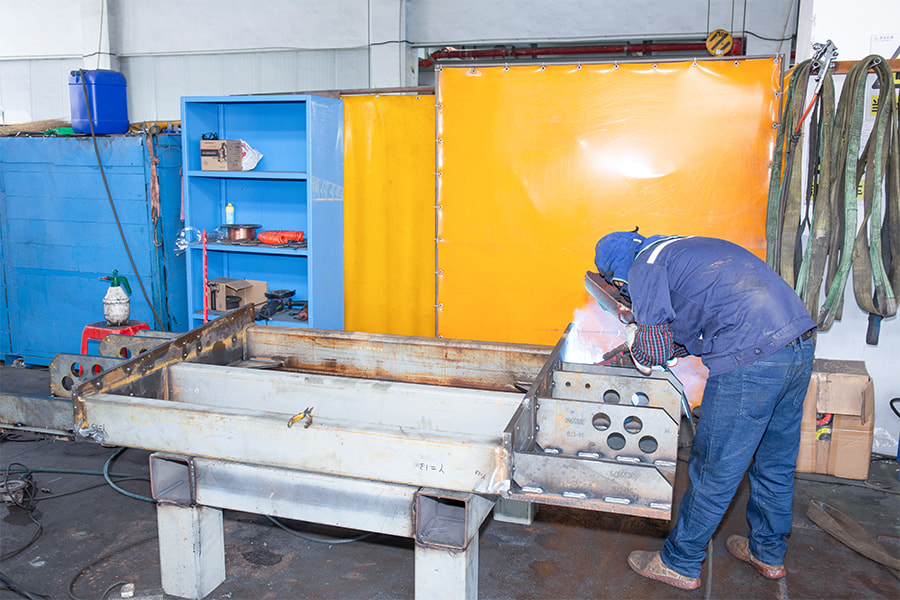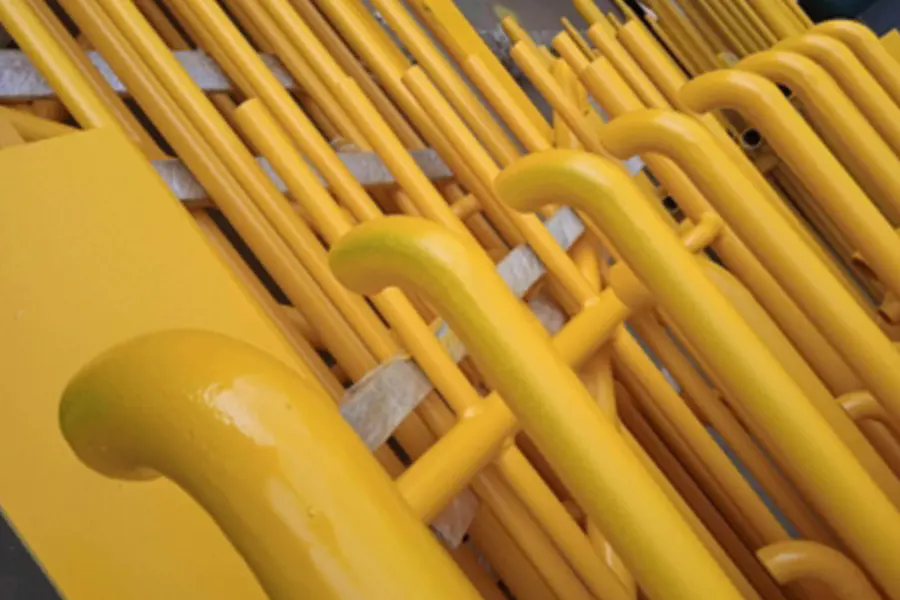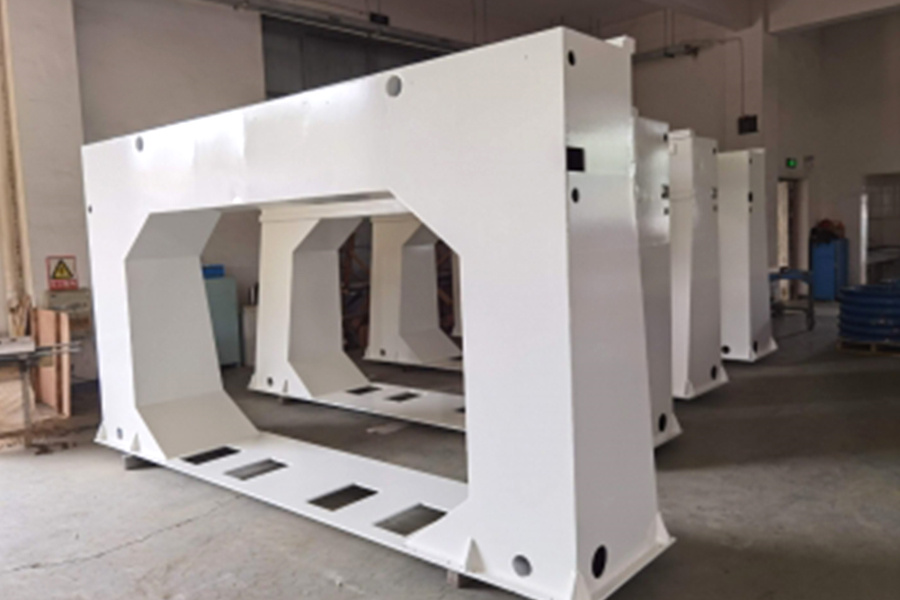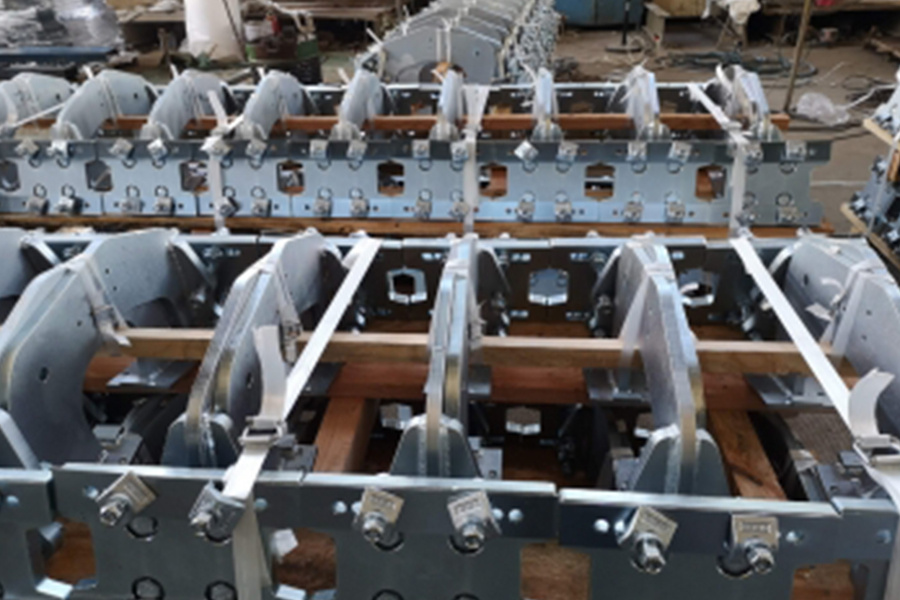No.158, Baoqun Road, Yaozhuang Town, Jiashan County, Jiaxing City, Zhejiang Province , China

Steel structural components form the backbone of modern industrial and manufacturing facilities worldwide. These robust frameworks provide the necessary support for heavy machinery, processing equipment, and operational infrastructure that drive global production systems. From automotive assembly plants to chemical processing facilities, steel's unique combination of strength, durability, and versatility makes it the material of choice for engineers and architects designing industrial spaces.
The evolution of manufacturing equipment has been intrinsically linked with advancements in steel technology. As industries demand higher load capacities, greater precision, and longer service life from their equipment, steel structures have continuously adapted to meet these challenges. Today's industrial steel components represent a perfect marriage between material science and mechanical engineering, enabling facilities to operate under extreme conditions while maintaining structural integrity.
Several key properties make steel the undisputed champion for manufacturing equipment structures:
Unmatched Strength-to-Weight Ratio: Steel offers exceptional load-bearing capacity relative to its weight, allowing for taller structures and wider spans without excessive bulk. This characteristic proves particularly valuable in manufacturing plants where overhead cranes and conveyor systems require sturdy yet lightweight support frameworks.
Dimensional Stability: Unlike other materials that warp or creep under sustained loads, steel maintains its shape and alignment over decades of service. This stability is crucial for precision manufacturing equipment where even millimeter-level deviations can affect product quality.
Ductility and Toughness: Steel's ability to bend without breaking provides inherent seismic resistance and impact absorption - critical features in industrial environments where equipment vibrations and occasional collisions occur. This ductility also allows steel structures to withstand extreme weather events better than brittle materials.
Adaptability and Modularity: The prefabrication potential of steel components enables rapid construction and easy modification of manufacturing facilities. As production needs evolve, steel structures can be disassembled, reconfigured, or expanded with minimal disruption to operations.
The marriage between steel and industrial equipment began in earnest during the Industrial Revolution, when cast iron structures proved inadequate for growing manufacturing demands. The development of Bessemer steel in the 1850s marked a turning point, enabling the construction of larger factories with open floor plans unobstructed by support columns.
By the early 20th century, standardized steel sections revolutionized plant design, allowing for the systematic layout of manufacturing equipment. The post-WWII era saw the rise of specialized steel alloys tailored to specific industrial applications, from corrosion-resistant varieties for chemical plants to ultra-high-strength compositions for heavy machinery supports.
Today, advanced computer-aided design (CAD) and building information modeling (BIM) systems have elevated steel structure engineering to unprecedented levels of precision, enabling the creation of manufacturing facilities that push the boundaries of size, complexity, and efficiency.
Beyond technical advantages, steel delivers compelling economic benefits for manufacturing operations:
Lifecycle Cost Efficiency: While initial costs may be higher than some alternatives, steel's durability and low maintenance requirements result in superior total cost of ownership. Modern protective coatings and corrosion-resistant alloys have extended the service life of industrial steel structures to 50+ years in many cases.
Speed of Construction: Pre-engineered steel buildings (PEBs) can be erected up to 30% faster than conventional construction, allowing manufacturers to begin operations sooner. This accelerated timeline is particularly valuable in industries with tight product launch schedules.
Space Optimization: Steel's strength enables longer spans between supports, creating more usable floor space for equipment layout. This efficient use of square footage directly translates to higher production capacity within the same footprint.
Contemporary manufacturing operations increasingly prioritize environmental responsibility, and steel structures contribute significantly to sustainable practices:
Recyclability: Steel maintains nearly 100% of its properties through unlimited recycling cycles. At end-of-life, industrial steel components can be repurposed without downgrading material quality - a crucial factor in circular economy models.
Energy Efficiency: Modern steel buildings incorporate advanced insulation systems that reduce heating and cooling demands. The precision fit of prefabricated steel components minimizes air leakage, further enhancing energy performance.
Reduced Material Waste: Computer-controlled fabrication processes optimize material usage, with typical waste rates below 2%. Any generated scrap steel retains high value for recycling, contrasting sharply with construction waste from other materials.
While steel offers numerous advantages, industrial applications present unique challenges that require innovative solutions:
Corrosion Resistance: Manufacturing environments often expose steel to moisture, chemicals, and temperature fluctuations. Modern solutions include hot-dip galvanizing, specialized coating systems, and weather-resistant steel alloys that form protective oxide layers.
Fatigue Management: Cyclic loading from operating machinery can lead to microscopic cracks over time. Advanced design techniques now incorporate fatigue analysis during the planning stage, while inspection protocols using ultrasonic testing and other NDT methods detect potential issues early.
Thermal Effects: Temperature variations in foundries or food processing plants can cause expansion/contraction. Engineers address this through expansion joints, sliding connections, and careful calculation of thermal movement in structural designs.
Emerging trends promise to further enhance steel's dominance in manufacturing equipment:
Smart Structures: Integration of sensors within steel components enables real-time monitoring of stress, vibration, and corrosion. This data-driven approach allows predictive maintenance and optimized equipment layouts.
Advanced Manufacturing Techniques: Additive manufacturing (3D printing) of complex steel components enables customized solutions for specialized equipment supports while reducing material waste.
High-Performance Alloys: Ongoing metallurgical research continues to develop steels with enhanced properties - greater strength at reduced weight, improved corrosion resistance, and better weldability for field modifications.
As manufacturing becomes increasingly sophisticated and demanding, steel structural components continue to evolve to meet these challenges. The following sections will explore in detail the types of steel structures used in industrial settings, material selection criteria, design considerations, and best practices for fabrication and maintenance. Understanding these fundamentals is essential for engineers, facility managers, and decision-makers responsible for creating efficient, safe, and productive manufacturing environments.
The versatility and reliability of steel ensure its continued dominance in industrial construction, even as new materials emerge. From small machine frames to massive plant structures, steel remains the silent workhorse that makes modern manufacturing possible - a testament to human ingenuity in materials science and structural engineering.
Industrial facilities rely on robust primary steel frameworks that form their structural skeleton. These systems are engineered to withstand both static and dynamic loads while providing flexibility for equipment integration:
Column and Beam Systems: The most common structural arrangement features vertical steel columns connected by horizontal beams. Modern manufacturing plants typically use wide-flange (I-beam) or hollow structural section (HSS) profiles that offer optimal strength-to-weight ratios. These frameworks support roof systems, overhead cranes, and upper-level equipment platforms.
Truss Structures: For long-span applications such as aircraft hangars or large assembly halls, steel trusses provide exceptional strength with minimal material usage. Warren, Pratt, and Vierendeel truss configurations are commonly specified based on specific load distribution requirements and clearance needs.
Space Frames: Advanced manufacturing facilities requiring column-free spaces often employ three-dimensional space frame structures. These lightweight yet rigid systems consist of interconnected steel tubes arranged in geometric patterns, capable of spanning over 100 meters without intermediate supports.
Industrial equipment demands customized steel supports designed for precise operational requirements:
Machine Foundations and Bases: Heavy machinery such as stamping presses or turbine generators require massive steel bases that dampen vibrations and maintain alignment. These often incorporate thick steel plates (up to 300mm) combined with reinforced box sections, sometimes filled with concrete for additional mass and stability.
Process Skids: Modular steel frames that integrate multiple pieces of equipment into pre-assembled units. Common in chemical and pharmaceutical industries, skids allow entire process systems to be factory-built, tested, and transported to site as complete packages.
Conveyor Support Systems: Continuous material handling systems rely on precisely aligned steel structures that maintain belt tracking over long distances. These supports must accommodate thermal expansion while resisting the dynamic loads of moving materials.
While not primary load-bearers, these steel elements are essential for facility functionality and worker safety:
Mezzanines and Work Platforms: Multi-level steel platforms create additional working space without expanding the building footprint. Industrial mezzanines typically feature grating floors with anti-slip surfaces, designed for easy modification as needs change.
Stair Systems: Industrial steel stairs are built to stricter standards than commercial versions, with heavier treads, sturdier handrails, and non-slip surfaces. Common configurations include straight-run, switchback, and spiral stairs for space-constrained areas.
Safety Barriers and Guardrails: OSHA-compliant steel railings protect workers from falls around equipment pits, elevated platforms, and machinery perimeters. These often combine vertical posts with midrails and toe boards for complete fall protection.
Steel dominates the material handling sector due to its strength and precision capabilities:
Pallet Rack Systems: Engineered steel storage structures that maximize vertical space utilization in warehouses and distribution centers. Modern selective, drive-in, and push-back racking systems can reach heights exceeding 30 meters while supporting extreme loads.
Overhead Crane Runways: Heavy-duty steel beams that support bridge cranes throughout manufacturing facilities. These runway systems require precise alignment tolerances (often within ±3mm) to ensure smooth crane operation.
Automated Storage/Retrieval Systems (AS/RS): Highly precise steel frameworks that support computer-controlled storage systems. These structures must maintain dimensional stability within ±1mm to ensure proper operation of robotic retrieval mechanisms.
Certain industries require specialized steel components tailored to unique operational demands:
Cleanroom Framing: Pharmaceutical and electronics manufacturing facilities utilize stainless steel framing systems that minimize particulate generation while resisting chemical sterilization processes.
Foundry Structures: Extra-heavy steel supports designed to withstand extreme heat and impact loads in metal casting operations. These often incorporate heat shields and specialized cooling systems within their structural elements.
Food Processing Frameworks: Sanitary stainless steel structures with smooth surfaces, radius corners, and minimal crevices to meet hygienic design standards. These support processing equipment while allowing thorough cleaning and inspection.
Steel's adaptability shines in these flexible applications:
Prefabricated Equipment Enclosures: Factory-built steel frames that house generators, compressors, or other equipment. These modular structures allow rapid deployment while providing weather protection and noise attenuation.
Temporary Support Towers: Adjustable steel shoring systems used during equipment installation or facility modifications. Engineered to precise load ratings, these components enable safe work under existing structures.
Portable Work Bridges: Lightweight steel structures that provide temporary access across equipment or processing lines during maintenance operations. These often feature foldable or telescoping designs for easy storage.
Steel structures must harmonize with other facility components:
Utility Support Systems: Dedicated steel channels and trapeze hangers that organize electrical conduits, pneumatic lines, and process piping throughout industrial facilities.
HVAC Structural Supports: Heavy-duty steel frameworks that suspend large ductwork systems and air handling units, often designed to accommodate vibration isolation requirements.
Fire Protection Integration: Steel structures incorporate fireproofing solutions such as intumescent coatings or concrete encasement while providing support for sprinkler systems and smoke management equipment.
Innovative approaches expanding steel's capabilities:
Hybrid Structures: Combinations of steel with composite materials or high-performance concrete that optimize both strength and damping characteristics for sensitive equipment.
Kinetic Support Systems: Adaptable steel frameworks with adjustable components that can modify their configuration to accommodate changing production layouts or equipment upgrades.
Smart Frames: Steel structures with embedded sensors that monitor stress, vibration, and environmental conditions in real-time, enabling predictive maintenance and performance optimization.
The selection of appropriate steel grades forms the cornerstone of reliable industrial structures. Engineers must navigate a complex landscape of material specifications, balancing mechanical requirements with environmental and economic factors. Modern manufacturing equipment demands steels that deliver consistent performance under varying operational stresses while maintaining long-term structural integrity.
Carbon content serves as the primary differentiator among steel categories, ranging from mild steels (0.05-0.25% carbon) to high-carbon formulations (0.6-1.0%). For most industrial structural components, medium-carbon steels (0.3-0.5% carbon) provide the optimal balance of strength and workability. The addition of alloying elements creates specialized properties tailored to specific manufacturing environments.
ASTM A36 remains the benchmark for general structural applications, offering:
For enhanced strength, ASTM A572 Grade 50 has become prevalent in modern manufacturing facilities, delivering:
Heavy machinery bases often specify ASTM A514 high-strength steel, featuring:
HSLA steels revolutionize industrial equipment through microalloying with elements like niobium, vanadium, and titanium. These additions enable:
Notable HSLA grades include:
Manufacturing processes involving chemicals, food products, or marine environments require stainless steel's protective chromium oxide layer. The three primary families each serve distinct industrial needs:
Austenitic (300 Series):
Ferritic (400 Series):
Duplex (2205):
Material selection requires careful evaluation of six key mechanical parameters:
| Property | Industrial Significance | Testing Standard |
|---|---|---|
| Tensile Strength | Determines maximum load capacity | ASTM E8 |
| Yield Strength | Defines elastic limit and safety factors | ASTM E8 |
| Elongation | Indicates ductility and formability | ASTM E8 |
| Impact Toughness | Measures fracture resistance | ASTM E23 |
| Hardness | Correlates with wear resistance | ASTM E10/E18 |
| Fatigue Strength | Critical for cyclic loading applications | ASTM E466 |
Industrial environments present varied corrosion challenges requiring tailored solutions:
Atmospheric Exposure:
Chemical Processing:
High-Temperature Oxidation:
Steel properties significantly influence manufacturing processes:
Weldability: Carbon equivalent (CE) formula predicts cracking risk:
CE = C + Mn/6 + (Cr+Mo+V)/5 + (Ni+Cu)/15
Values below 0.45 ensure good weldability without preheat
Machinability: Free-machining steels (11XX series) contain sulfur/lead for:
Formability: Deep drawing applications require:
Advanced materials push industrial capabilities forward:
Nanostructured Steels:
Medium-Mn Steels (3rd Gen AHSS):
Functionally Graded Steels:
Strategic material selection follows four key principles:
The global steel market offers increasing options, with China's GB standards, Europe's EN norms, and Japan's JIS specifications providing regional alternatives to ASTM grades. Proper material certification (mill test reports) and traceability systems ensure quality consistency for critical industrial components.
Industrial equipment structures require meticulous load analysis to ensure operational safety and longevity. Engineers must evaluate four primary load categories:
Modern design practices employ finite element analysis (FEA) software to simulate complex load interactions, identifying stress concentrations before fabrication begins. The American Institute of Steel Construction (AISC) Load and Resistance Factor Design (LRFD) methodology provides the industry-standard approach for structural calculations.
Steel structure performance largely depends on connection integrity. Industrial applications demand specialized approaches:
Moment-Resisting Connections: Rigid joints that transfer both shear and bending moments, essential for:
Slip-Critical Bolted Joints: High-strength bolted connections designed to resist slippage under load, critical for:
Welded Joint Configurations: Proper weld design prevents stress concentrations:
Manufacturing equipment induces vibrations that can compromise structural integrity. Design mitigation strategies include:
| Vibration Source | Frequency Range | Control Methods |
|---|---|---|
| Rotating Machinery | 10-100 Hz | Tuned mass dampers, isolation mounts |
| Impact Equipment | 5-30 Hz | Elastic foundation pads, inertia blocks |
| Material Handling | 1-15 Hz | Structural stiffening, damping layers |
Natural frequency analysis ensures structural modes don't coincide with equipment excitation frequencies, preventing resonant amplification. ASME STS-1 standards provide guidelines for steel stack design that can be adapted to general industrial structures.
Temperature variations in manufacturing environments cause dimensional changes that must be addressed:
Expansion Joint Design:
Thermal Gradient Analysis:
Prefabricated steel structures offer advantages for industrial applications:
Building Information Modeling (BIM) enables clash detection between structural elements and mechanical systems before fabrication, reducing field adjustments. Modern software can automatically generate connection details and erection sequencing.
Industrial steel designs must incorporate:
Access Features:
Maintenance Provisions:
Fail-Safe Design:
Emerging technologies transform structural design:
These innovations enable lighter, more efficient structures that can adapt to changing manufacturing needs throughout their service life.
Effective maintenance programs for industrial steel components require a systematic approach combining inspection, prevention, and timely intervention. Leading manufacturers implement condition-based maintenance (CBM) systems that prioritize resources based on actual equipment conditions rather than fixed schedules. This methodology typically reduces maintenance costs by 25-30% while improving structural reliability.
Key elements of successful maintenance programs include:
Corrosion remains the primary threat to steel structural longevity in industrial environments. Modern protection strategies employ a layered defense approach:
| Protection Method | Expected Service Life | Inspection Interval |
|---|---|---|
| Hot-Dip Galvanizing | 50+ years (rural), 20-30 years (industrial) | Biennial visual inspection |
| Epoxy/Polyurethane Coatings | 15-25 years | Annual adhesion testing |
| Cathodic Protection | 25-40 years | Monthly potential measurements |
| Weathering Steel | 50+ years | Triennial patina evaluation |
Advanced inspection techniques now supplement traditional visual methods:
Cyclic loading in manufacturing environments leads to microscopic crack initiation and propagation. Effective fatigue management requires:
Critical Location Identification:
Advanced Monitoring Techniques:
Repair Methodologies:
Emerging solutions can add 15-20 years to structural service life:
Nanostructured Coatings:
Structural Health Monitoring (SHM):
Advanced Cathodic Protection:
When structures require upgrading, engineers consider multiple approaches:
Section Strengthening:
Connection Upgrades:
Corrosion-Damage Mitigation:
Responsible lifecycle management includes dismantling considerations:
Modern steel structures routinely achieve 90%+ recycling rates, with many components finding second lives in less demanding applications. Proper documentation and material traceability ensure maximum value recovery at end-of-service.

The steel structure industry has experienced significant evolution in recent years, d...
READ MORE
Optimizing the Engineering Workspace Boosting Comfort and Efficiency for Electrical...
READ MORE
The Structural Blueprint of Dimensioning Equipment Anatomy of the Planer-Thicknesser:...
READ MORE
The global shift towards sustainable power is undeniable, with new energy equipment l...
READ MORE